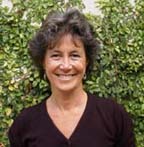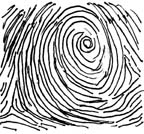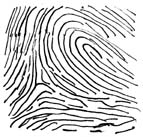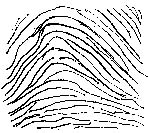| Clever detectives solve mysteries. There isn't a child in my fourth grade...or yours for that matter, that isn't clever, and so it seems appropriate to begin the school year by becoming detectives in order to discover clues. There are clues in everything we learn at school. Then once the children figure out how to look for clues on their own, they become life long detectives...a.k.a. life long learners. Now is there a more worthy goal in education? I think not, so let's begin.
Fingerprinting is a fascinating science that is a big part of detective work. The Lawrence Hall of Science of the University of California at Berkley has a fantastic Fingerprinting unit. I began my year with three days of learning to fingerprint, reading and sorting types of fingerprints, and then ultimately solving the mystery of who stole the money from the vault from the story that was included in the unit. The children had a blast and learned not only about whorls, loops, and arches, but also about how to search for clues.
Clues are what we all need for understanding when we read a story. So the detective theme has slipped right into our reading activities, too. When the children read they look for clues to comprehend. We read the Wright Group's Ira LaBonga series of books by Margaret Mahy and some Encyclopedia Brown by Jonathan Sobel. Who Stole Tiger's Eye published by the Wright Group made a great hit, too. We were really solving mysteries within the text. Harriet the Spy by Louise Fitzhugh is a great read aloud at this time of year. Also, the children love pouring over the I Spy books by Walter Wick.
We even helped our Little Buddies hunt for clues on the first day of school. It seems their gingerbread cookies ran away and left crumbs all over the school. Searching for relevant details and putting them together in the proper order helped to retrieve the scrumptious scamps for our little friends.
How to make a set of fingerprints:
1. Rub soft leaded pencil on a paper to create a 1/2 inch patch.
2. Press your finger pad onto the lead patch. (Don't rub your finger. Just press it flat. Down, then up.)
3. Press a piece of clear tape onto the leaded pad of your fingertip.
4. Lift off the tape careful not to touch the print.
5. Place tape on white paper.
6. Investigate lines in the print with a magnifying glass. |



